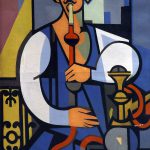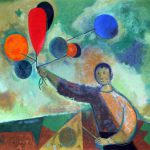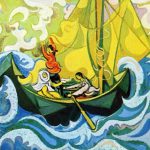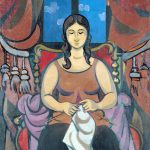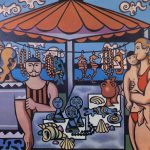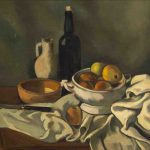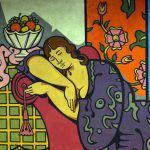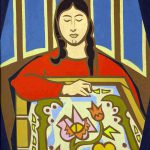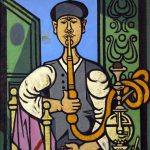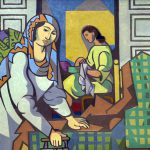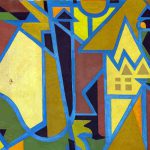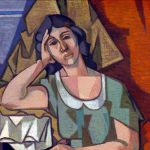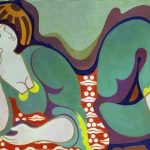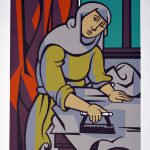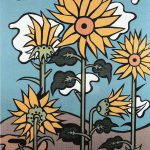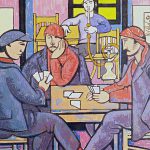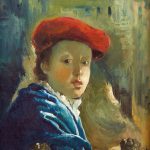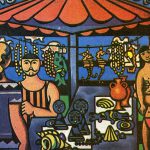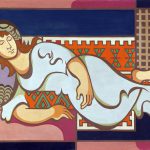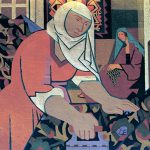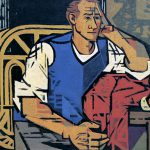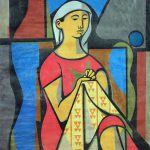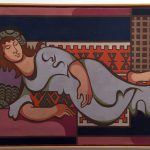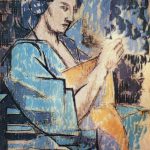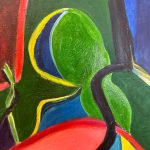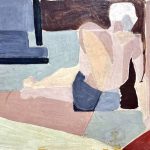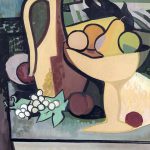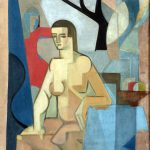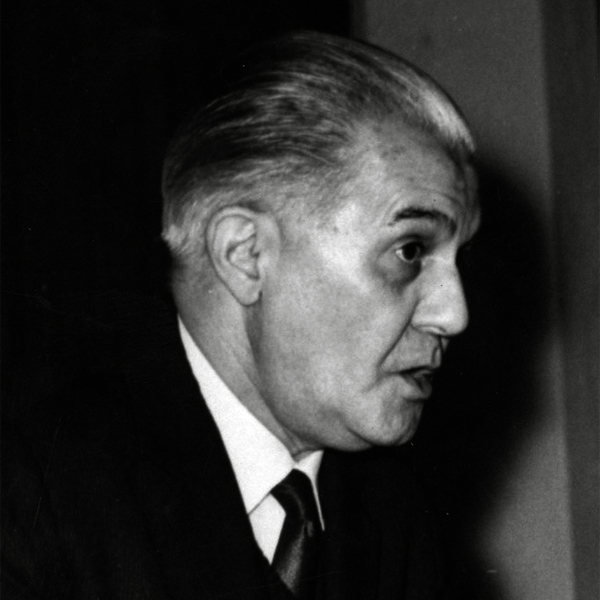
Who is Nurullah Berk? (22 March 1906, Istanbul – 9 January 1982, Istanbul)
Nurullah Berk is one of the first representatives of geometric-figurative construction (constructivism) in Turkey. There are also influences of cubism in his works. He was born on March 22, 1906 in Istanbul. After graduating from Galatasaray High School, he became a student of İbrahim Çallı and Hikmet Onat at Sanayi-i Nefise Mektebi. He went to France in 1924 and studied with Ernest Laurent at the Paris School of Fine Arts. He worked in the workshops of Andre Lhote and Fernand Leger for about a year, using his own resources. The differences between Nurullah Berk’s early and late works point to his researcher side. In his works, technical and aesthetic aspects are in integrity with their plastic structures.
He completed his education in 1928 and returned to Turkey and was among the founders of the “Independent Painters and Sculptors Union” with a group of friends. Five years later, the artist went to Paris again and returned to Turkey in 1933, and in the same year, Abidin Dino, Elif Together with Zeki Faik İzer, Cemal Tollu and Zühtü Müridoğlu, Naci pioneered a new approach described as “cubist and constructive technique, stylistically parallel to contemporary movements in the West, against the impressionist attitude dominant in Turkey”. With Berk’s suggestion, this group was named “Group D”.
Berk, who opened many exhibitions at home and abroad, won the Ahmet Çanaklı Award in 1947, the first prize of the 28th State Painting and Sculpture Exhibition in 1966, and the DYO Award Painting Competition in 1975.
Berk's efforts over the last 15 years have been interpreted as "fusing Eastern and Western humor and reconciling traditional art forms with Western understanding." Berk, who founded the Turkish national committee of the International Association of Art Critics in UNESCO together with Suut Kemal Yetkin in 1953, has many published works on art history, painting and sculpture.
He died in Istanbul on January 9, 1982. His body was buried in Heybeliada Cemetery on January 13, 1982.
Artistic Perspective
Nurullah Berk's art, which developed in line with new movements in Turkey starting from the 1930s, gained weight in cubist and volumetric tendencies, and over time, it gained its true identity at the level of abstractions based on a kind of East-West synthesis. Cubist influences in the artist are a natural reflection of the workshops of Andre Lhote and Fernand Leger. The attempt at synthesis, on the other hand, constitutes rather a contemporary extension of Turkish and traditional Eastern cultures. In a period when Western influences intensified, the awareness of seeking new ways of entering art from tradition is a behavior specific to the generation in contemporary Turkish painting, including Nurullah Berk. Nurullah Berk made a significant contribution to the movements that were based on national and local values in a sense, reaching a stage where they would concern a wider group of artists on a personal level over time.
In the Republic's struggle to create a modern state and social structure, Berk and other artists of his period also fought to glorify the human element through artistic taste and culture and to make it productive and creative.
Some of his works:
Sunflowers, Still Life with Playing Cards, Woman Ironing, Potter, Odalisque, Thorns, Birds
His books; 1932 - Modern Art, 1933 - Leonardo da Vinci, 1937 - Turkish Sculptors, 1943 - Painting in Turkey, 1950 - La Peinture Turque, 1951 - Bellinis, 1957 - Painting and Sculpture in Turkey, 1964 - Painting Information, 1968 - Sandro Botticelli, 1968 - Paolo Ucello, 1968 - Piero della Francesca, 1971 - Conversations with the Masters, 1972 - Istanbul Painting and Sculpture Museum, 1973 - Turkish Painting and Sculpture in Fifty Years, 1977 - Fikret Mualla, 1977 - Istanbul in Turkish Painting
